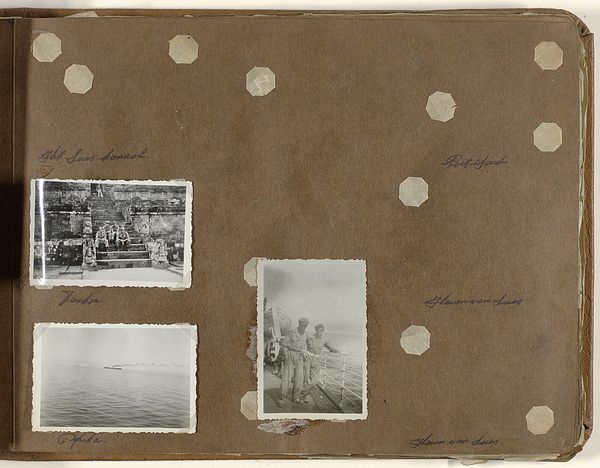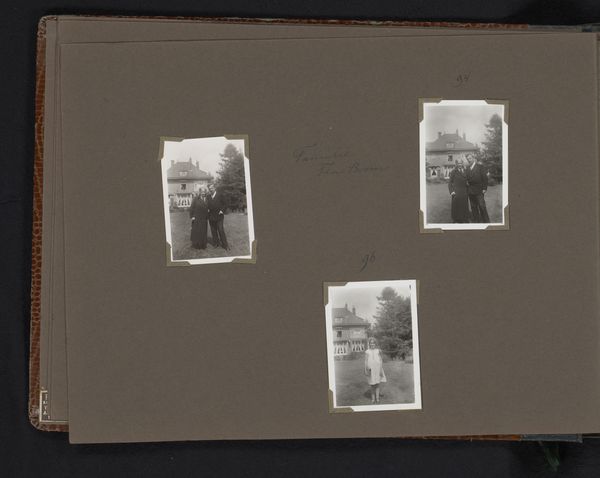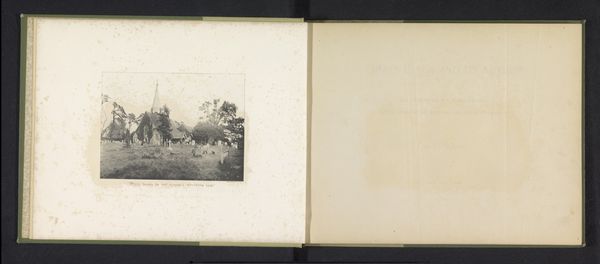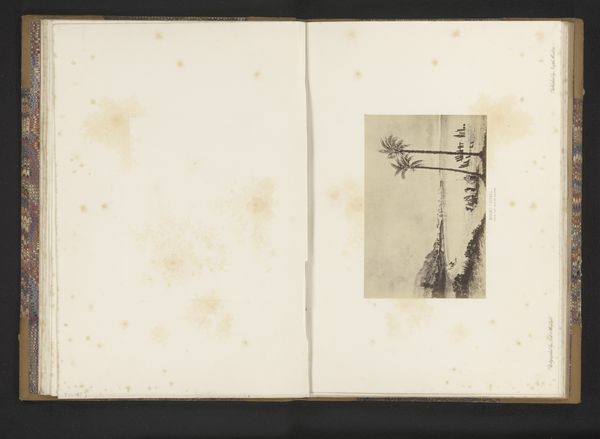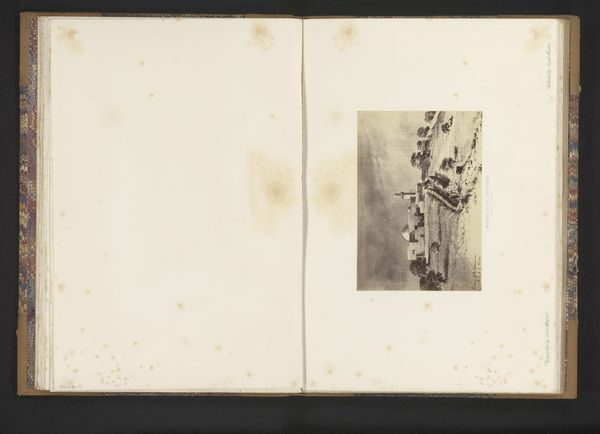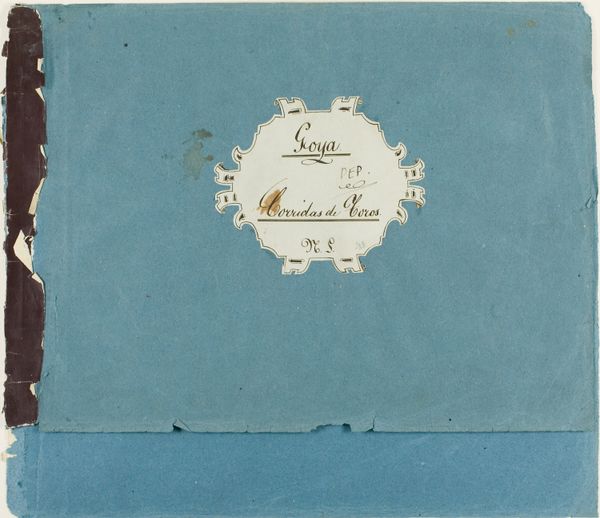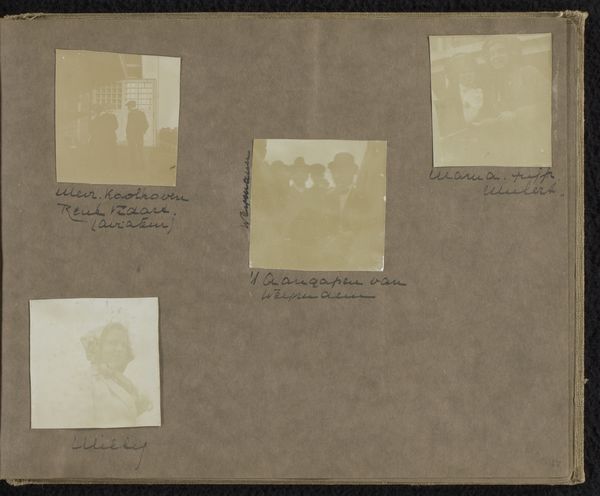
collage, print, photography, albumen-print
#
portrait
#
collage
# print
#
photography
#
coloured pencil
#
albumen-print
Dimensions: height 24 cm, width 34 cm
Copyright: Rijks Museum: Open Domain
Curator: First impressions? I’m intrigued by the way this image, a collage from 1948 titled "Arrival in India," triggers something so visceral in me, even before I fully grasp its historical weight. Editor: It feels intimate, like peeking into a private photo album. The faded photograph tucked into a worn page, it’s almost like stumbling upon a forgotten story in an attic. But the overall effect, at least initially, is quite somber, don't you think? A little melancholy clinging to the edges. Curator: Definitely a somber quality. What is arresting to me is how the artist decided to bring together print, photography, albumen prints—various media speaking to the idea of memory, both staged and raw. See how each photograph’s little paper mounts remain. The photographs have faded but the artist keeps them here almost like icons, suggesting what can not be easily displaced by the viewer. Editor: Yes, the layering here speaks volumes. The photographic portrait placed in a group setting, set against handwritten notes. This could be considered a visual metonym, of arrival—a kind of crossing. Consider too how India and the history surrounding partition are still such loaded symbols and potent in the collective consciousness of those displaced and their descendents. Curator: Absolutely. The physical act of pasting, arranging—it transforms a mundane photo album page into a kind of sacred space. We aren’t just looking at a depiction; we’re witnessing an attempt to hold onto something slipping away. Do you see how these simple arrangements offer insight on remembrance, loss and transition? Editor: It really underscores the emotional work we invest in these images, and how they function as anchor points. What strikes me too is the inherent tension—the photograph is fixed, static, while memory itself is fluid, always changing, reforming. Perhaps the artist suggests even time and memory are also culturally manufactured events as are nationhood and family. Curator: A profound point. The artist seems to say, "Here, these are pieces of me, of my history." It makes me consider the fragile beauty of imperfect things, and the strength we find in assembling meaning from fragmented experiences. Editor: For me, it emphasizes how we project meaning onto images, how those images shape our sense of belonging, of identity, across continents, generations. The album is really a palimpsest of personal, collective, and cultural inscriptions.
Comments
No comments
Be the first to comment and join the conversation on the ultimate creative platform.
